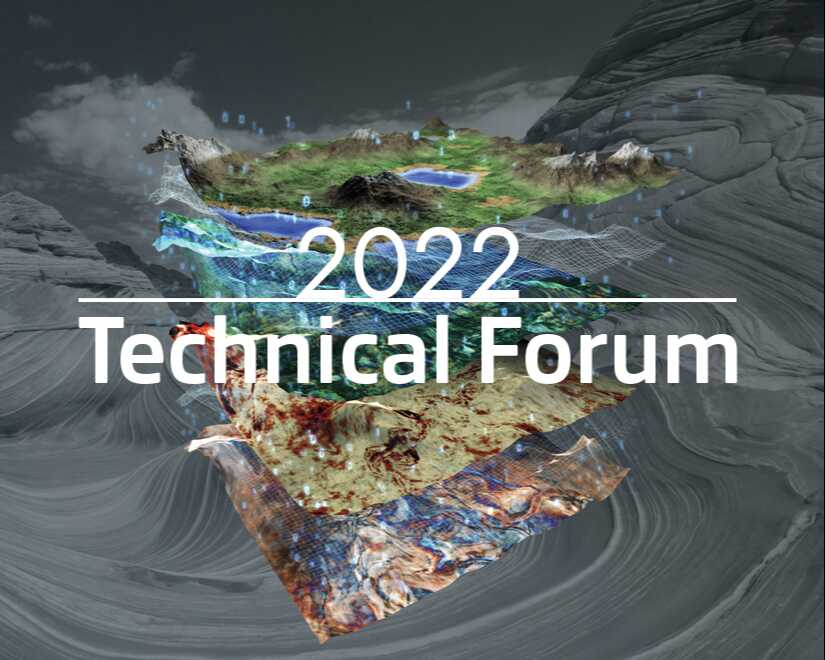PaleoScan™ 2022 Technical Forum Retrospective

Eliis Technical Forum version 2022 was a great success thanks to all speakers and participants! We were blessed on having around 380 registrants over the 3 sessions. People from all around the world connected to the different sessions to hear more about Eliis and PaleoScan™ 2022 version: Asia, Oceania, Europe, Scandinavia, Latin America, North America, Africa and Middle East! A big thank you for your implications and contributions to our events, we hope you have enjoyed them as much as we did!
A special thanks to all of our external speakers for sharing their work and findings with us. It was very rewarding for us to see how you have successfully been using PaleoScan™ to tackle different challenges from revealing all the complexity and the beauty of a tidally-influenced fluvial channel of the Miocene Malay Basin (Nurul Adilah Manshor, University of Malaya); characterizing a karst system on an isolated carbonate platform (Siti Sarah, DGeG); performing seismic stratigraphy offshore Argentina by leveraging PaleoScan™ ‘s Wheeler transform tool (Facundo Pagan, YPF); quickly identifying new opportunities in surrounding blocks (Carlos Quijada, Apogee); better characterizing fluvial environment in the Golf of San Jorge (Luis Vernengo, PAE); and understanding the complete evolution of the Permian Basin (Sumit Verma, UTPB).
We would also like to thanks our partners warmly for presenting alongside us the result of great collaborations: Aurélien Van Welden, Julian Chenin and Ana Krueger from Bluware; Matthew Ellwood and Lucas Delgado from Schlumberger.
The main highlight of the PaleoScan™ 2022 version is the integration of Bluware FAST™ adaptative technology to stream seismic volumes stored in VDS format in the OSDU™ Data Platform. The extremely efficient VDS compression capability drastically reduces storage capacity and minimizes data silos without any loss in the application’s interactivity. This functionality is now available as a beta version in the core application until January 2023 to foster collaboration and collectively build the next steps of PaleoScan OSDU™ Data Platform Journey.
The PaleoScan™ 2022 upgrade also focused on improving the performance of the 2D workflow as well as facilitating users’ navigation through the application.
The main focus of this Technical Forum from the Eliis team were:
- Eliis key strategical themes and PaleoScan™ 2022 new features
- Embedding Bluware FAST™ adaptive streaming technology into PaleoScan™
- Schlumberger and Eliis integrated seismic interpretation to structural framework workflow
Please find here the video recording of the Eliis’ presentations to watch again and/or share with your co-workers:
Embedding Bluware FAST™ adaptive streaming technology into PaleoScan™
Eliis is a member of The Open Group OSDU™ Forum since 2020 with the objective to frame PaleoScan’s evolution to meet to new data standards. The first step in PaleoScan™ OSDU journey is to guarantee that data can be accessed and delivered directly to PaleoScan™ from the OSDU™ Data Platform using Bluware FAST™ adaptive streaming technology.
Bluware VDS™ is a powerful and flexible storage format for signal data and it has been recognized as the standard of the OSDU™ Data Platform for seismic storage and exchange. This format can be stored in two forms including file-based and cloud-based object store. It allows you to compress raw and interpreted volumes of seismic data sets. The user can make trade-offs between storage-space and performance based on different compression modes and qualities that can be applied to the signal data, providing a way to make significant savings in storage space.
The integration of Bluware FAST™ into PaleoScan™ enables the ability to store seismic data in VDS format and stream it from the cloud, leveraging cost-efficient, and highly scalable object storage (AWS S3 or Microsoft Azure BLOB store) to store raw seismic files. Bluware FAST™ acts as a translator between VDS and the read requests made by PaleoScan™. It transcodes from VDS to PaleoScan™ format on-the-fly and stores PaleoScan™ volumes into a virtual drive thereby removing any storage constraints and gaining performance efficiency.
Eventually, the next step of PaleoScan™ conformance journey with OSDUTM Data Platform will be the Ingestion of PaleoScan™ 3D attributes and interpretation volumes into the OSDUTM Data Platform (PaleoScan 2022.2.0)
Schlumberger and Eliis: Integrated seismic interpretation to structural framework workflow
Seismic interpretation workflows can be enriched through the usage of PaleoScan™ and the Petrel E&P software platform together to refine subsurface interpretations. Working across two platforms introduces a number of data challenges that can inhibit workflow efficiency. To produce accurate subsurface models, it is critical that interpretation products are structurally consistent. Through the adoption of a common fault framework and with the addition of new tools to consume the output data from each application, a connected workflow between the two applications can be realised. Stratigraphic interpretation in PaleoScan™ can be constrained to fault framework from the Petrel platform and the structural framework model can easily integrate additional stratigraphic information enriching subsurface understanding.

